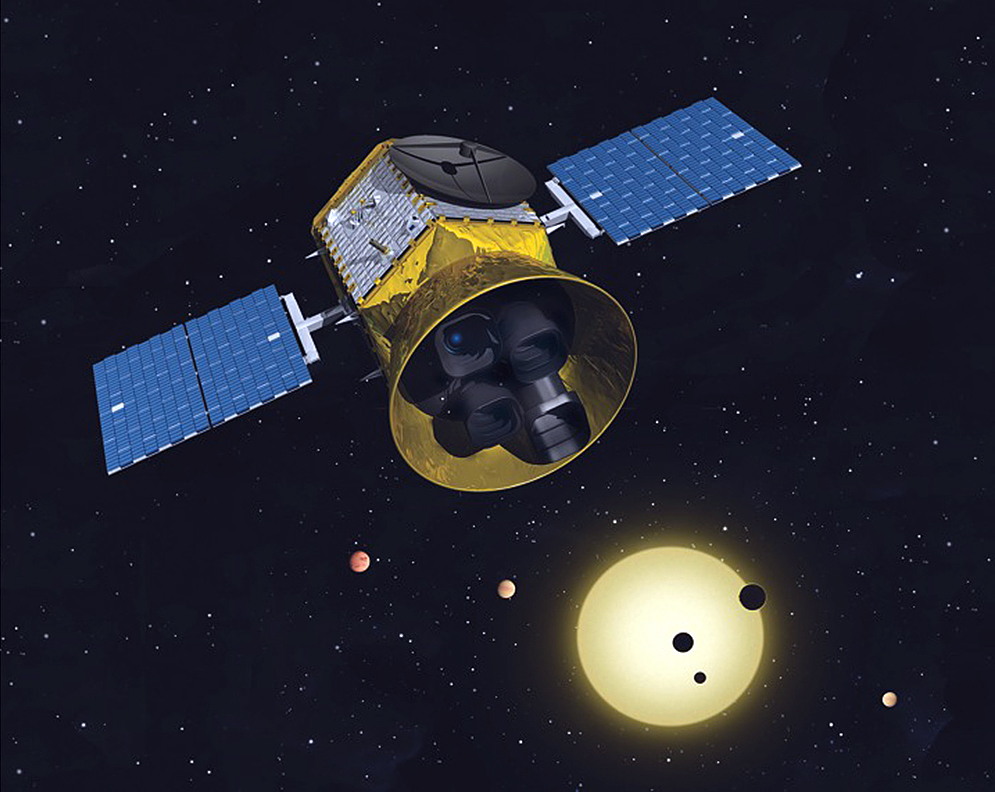APRIL 13, 2029: The near-Earth asteroid (99942) Apophis will pass just 0.00026 AU from Earth, slightly less than 5 Earth radii above the surface and within the orbital distance of geosynchronous satellites. At this time this is the closest predicted future approach of a near-Earth asteroid. The process of determining future close approaches like this one is the subject of this week’s “Special Topics” presentation.
APRIL 14, 2020: The near-Earth asteroid (52768) 1998 OR2, which will be passing close to Earth later this month, will occult the 7th-magnitude star HD 71008 in Cancer. The predicted path of the occultation crosses central Belarus, central Poland, northwestern Czech Republic, southern Germany, western Switzerland, southeastern France, central Algeria, far eastern Mali, and western Niger.
APRIL 15, 2019: A team of scientists led by Larry Nittler (Carnegie Institution for Science) announces their discovery of an apparent cometary fragment encased within the meteorite LaPaz Icefield 02342 that had been found in Antarctica. This discovery provides information concerning the transport of primordial material within the early solar system.
APRIL 17, 1968: Paul Wild at the University of Bern in Switzerland records, under the preliminary designation 1968 HD, the first images of the main-belt asteroid now known as (4151) Alanhale. For obvious reasons, I am using this asteroid as an example of how asteroids are designated, numbered, and named in next week’s “Special Topics” presentation.
APRIL 17, 2004: Comet Bradfield C/2004 F4 passes through perihelion at a heliocentric distance of 0.168 AU. This comet, the 18th and last comet discovery by the champion Australian comet hunter William Bradfield, later became a somewhat-bright naked-eye object, and is a future “Comet of the Week.”
APRIL 17, 2015: Following its launch as part of the SpaceX Cargo Resupply Mission 6 from Cape Canaveral, Florida, the proof-of-concept Planetary Resources Arkyd-3 Reflight CubeSat is attached to the International Space Station. Arkyd-3 Reflight would be deployed from the ISS three months later. Planetary Resources’ initial efforts to establish asteroid mining operations are discussed in a previous “Special Topics” presentation.

APRIL 18, 2018: NASA’s Transiting Exoplanet Survey Satellite (TESS) mission is launched from Cape Canaveral, Florida. Although TESS’ primary mission is – as its name indicates – the detection of exoplanets via the “photometric” or “transit” technique, it has observed some comets, and has detected transiting exocomets around the star Beta Pictoris; these are discussed in a previous “Special Topics” presentation.
APRIL 18, 2028: NASA’s Lucy mission is scheduled to perform a flyby of the Jupiter Trojan asteroid (11351) Leucus, which is notable for having an unusually slow rotation (its rotation period being over 19 days). The Lucy mission was discussed in last week’s “Special Topics” presentation, and Trojan asteroids are discussed in a future “Special Topics” presentation.
More from Week 16:
Comet of the Week Special Topic Free PDF Download Glossary
Ice and Stone 2020 Home Page


